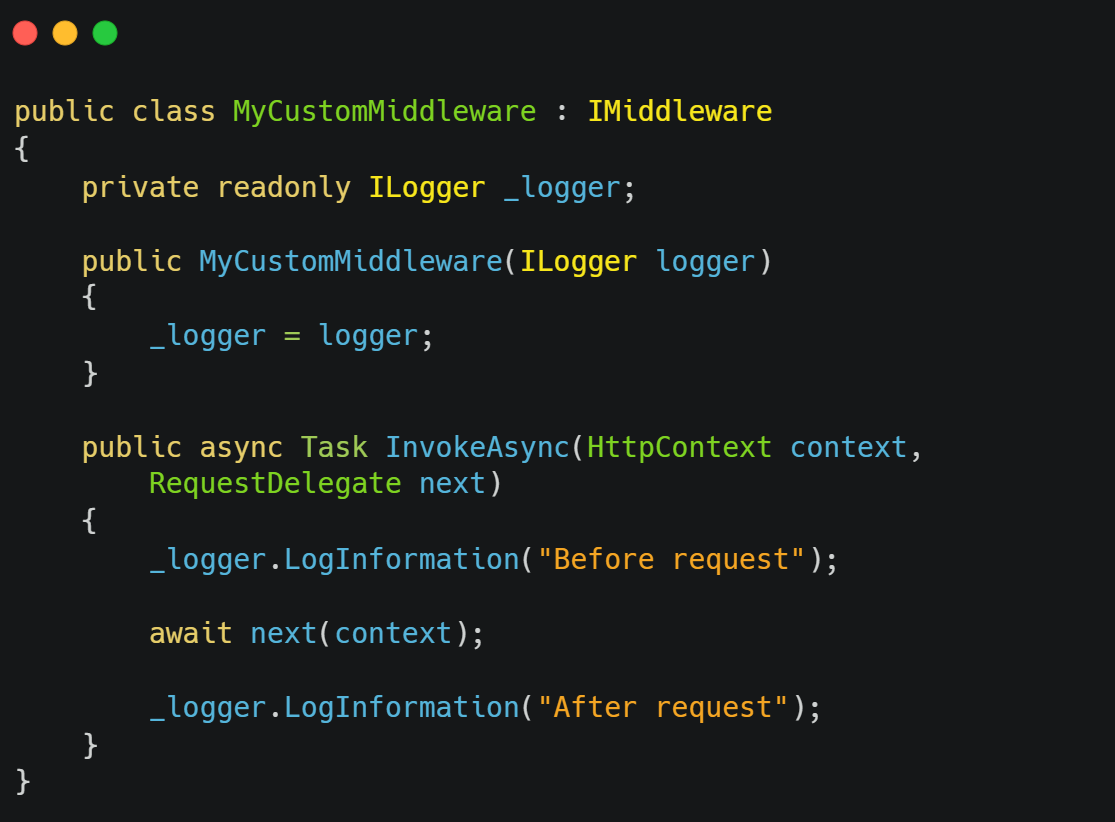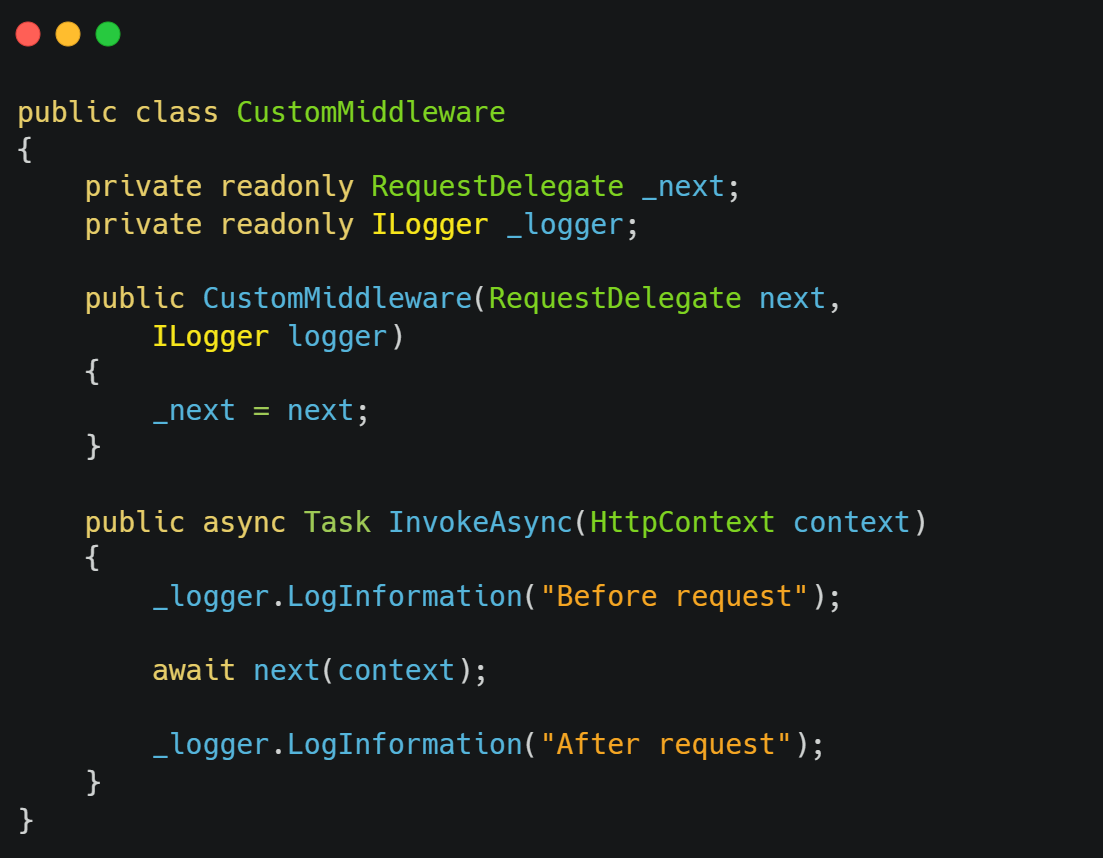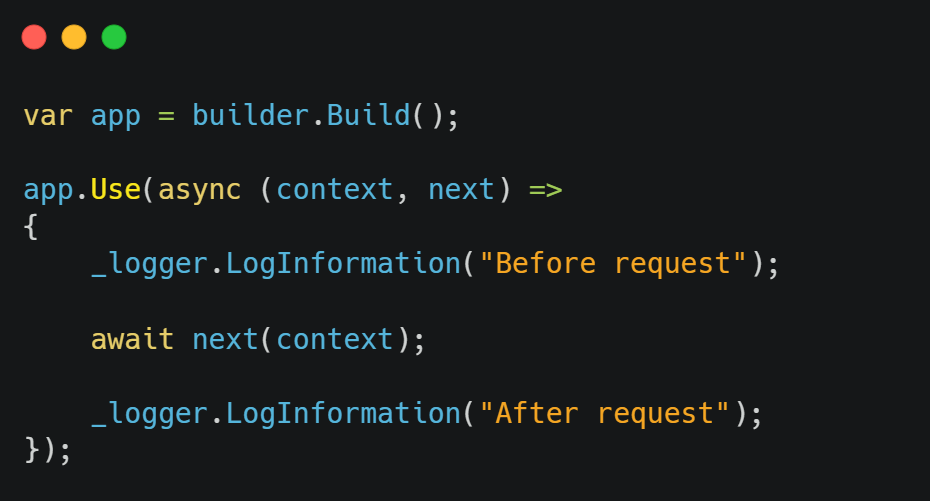How do I create Middleware? And what are the alternatives?
Sep 18 2023
The background
Middleware in the context of web development is a piece of software that sits between two or more software applications or layers, enabling them to communicate, manage data, or execute other functions.
Middleware enables us to add extra functionality either before or after the processing of an HTTP request.
You're likely already utilizing several of the framework's pre-existing middleware components (Authentication, Authorization, Routing, etc.).
But it is also possible to create custom middleware for your needs.
Here I will show how I do it and why I think it is the best way.
How do I create Middleware?
There are a couple of ways that middleware can be implemented, which I'll talk about a little later.
My way is to create Factory-Based Middleware through the implementation of the existing IMiddleware interface.
This class actually represents the middleware itself and has only one InvokeAsync method that is executed during each request. This is where you implement the logic of your middleware.
Here's how you can do it:

And that's it, you have implemented your Middleware.
Of course, in order for this to work, as for everything else, it is necessary to add the service and configure the middleware in the Program.cs class:

Why is this the way I prefer?
Explicit Interface
The IMiddleware interface makes it clear what a middleware component should do, and it ensures that you don't accidentally miss the InvokeAsync method.
Reusability and Testability
Because it's strongly-typed and follows a clear interface, this kind of middleware is often easier to unit test. You can mock dependencies more easily and validate whether your middleware behaves as expected under different conditions.
Readability
The strongly-typed nature of the middleware can make the code more readable and easier to understand, particularly for developers who are new to the project or are not as familiar with middleware in general.
What are the alternatives?
Alternative #1: Convention Middleware
In this case, instead of implementing the interface, I use RequestDelegate.
Here is the implementation:

Alternative #2: Middleware with Request Delegate
You can do that by calling the Use method on the WebApplication instance and providing a lambda method with two arguments. The first argument is the HttpContext and the second argument is the actual next request delegate in the pipeline RequestDelegate.
Here is the implementation:

And that's it.
Wrapping up
In today's Newsletter issue, I showed you how to implement Middleware in ASP.NET Core.
I showed 3 possible ways, how I do it and which way I choose, as well as why I think the implementation of the IMiddleware interface is the best.
That's all from me for today.
dream BIG!
There are 3 ways I can help you:
My Design Patterns Ebooks
1. Design Patterns that Deliver
This isn’t just another design patterns book. Dive into real-world examples and practical solutions to real problems in real applications.Check out it here.
Go-to resource for understanding the core concepts of design patterns without the overwhelming complexity. In this concise and affordable ebook, I've distilled the essence of design patterns into an easy-to-digest format. It is a Beginner level. Check out it here.
Join TheCodeMan.net Newsletter
Every Monday morning, I share 1 actionable tip on C#, .NET & Arcitecture topic, that you can use right away.
Join 17,150+ subscribers to improve your .NET Knowledge.
Subscribe to
TheCodeMan.net
Subscribe to the TheCodeMan.net and be among the 17,150+ subscribers gaining practical tips and resources to enhance your .NET expertise.